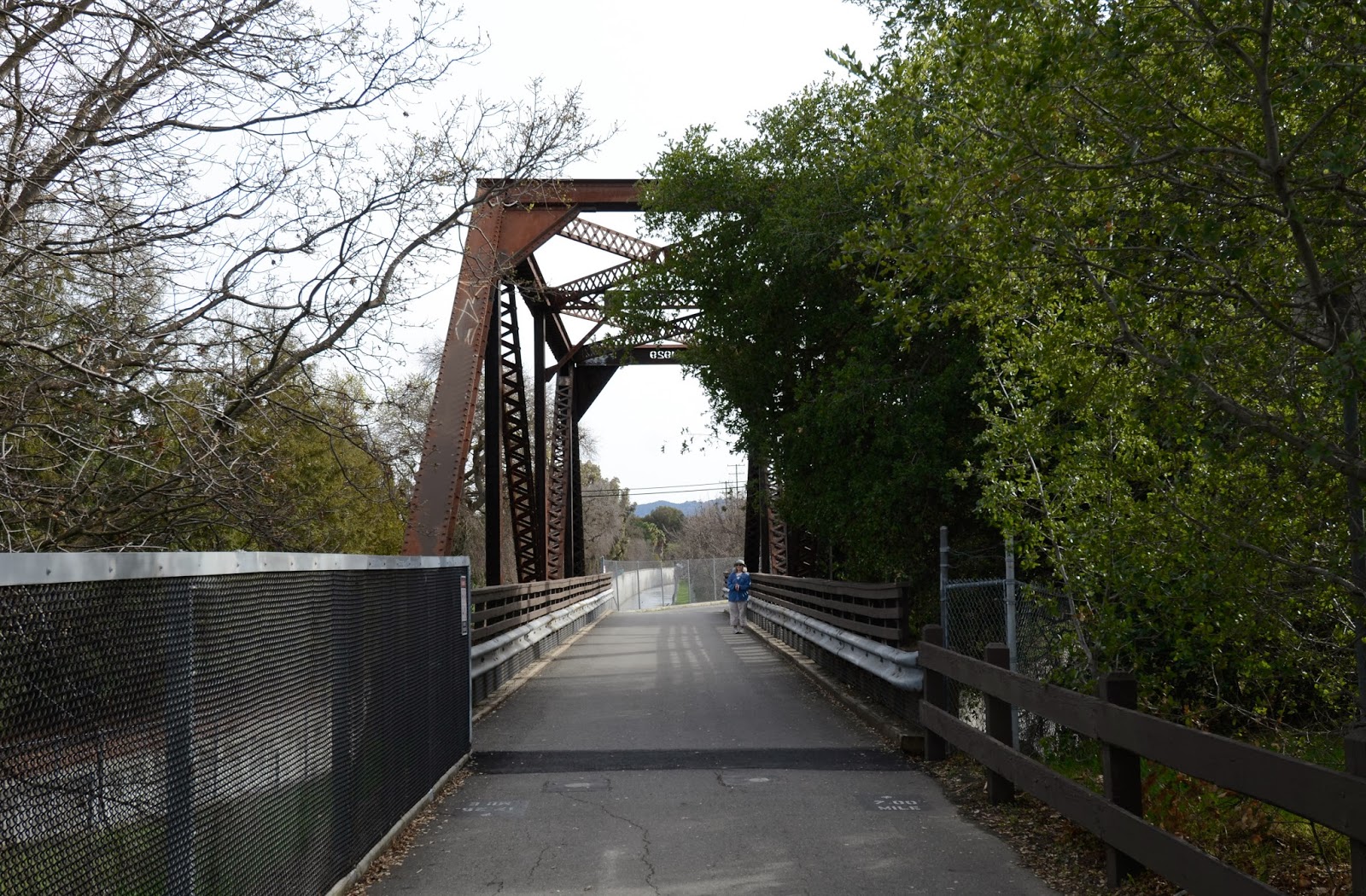 |
| February 2014 (37.92655 Degrees, -122.0546 Degrees) Iron Horse Trail Bridge |
One of the nicest bridges on the Iron Horse Hiking Trail is the Robert I. Schroder Pedestrian Overcrossing in Pleasant Hill. This tied arch bridge was designed by Arup of San Francisco, it cost $6.8 million, and it was completed in October of 2010. It's an 800 ft long steel structure with a concrete substructure and a 10 ft wide deck. The bridge has a steel box girder superstructure supported by outward-inclining steel arches that rise 42 ft above Treat Blvd.
Each arch rib is composed of three steel pipes bolted to wedge-shaped steel diaphragms. The ends of the steel arch ribs are connected with a steel cross brace and anchored into cylindrical reinforced concrete legs that are part of a single large foundation. The main span is 240 ft long and supported by pairs of crossed cables (40 ft apart) hanging from the wedge-shaped steel diaphragms.
This is an efficiently designed structure. A cylindrical concrete column is placed squarely between the concrete legs of the arch ribs. The steel diaphragms brace the pipe elements of the arch ribs and also carry the weight of the deck. In the past arch ribs were parallel or inclined together into a basket-handle shape but now outward inclining arch ribs seem to be popular.
My friend Richard Hartzell mentioned that the bridge is on a horizontal curve and so each arch rib has a different slope to accommodate the curve, which must have been difficult to analyze and design. More information about this bridge can be found on the
Arup website.
 Contra Costa County, California Bridges: Robert I. Schroder Pedestrian Overcrossing across Treat Blvd
Contra Costa County, California Bridges: Robert I. Schroder Pedestrian Overcrossing across Treat Blvd by
Mark Yashinsky is licensed under a
Creative Commons Attribution-NonCommercial-NoDerivatives 4.0 International License.









